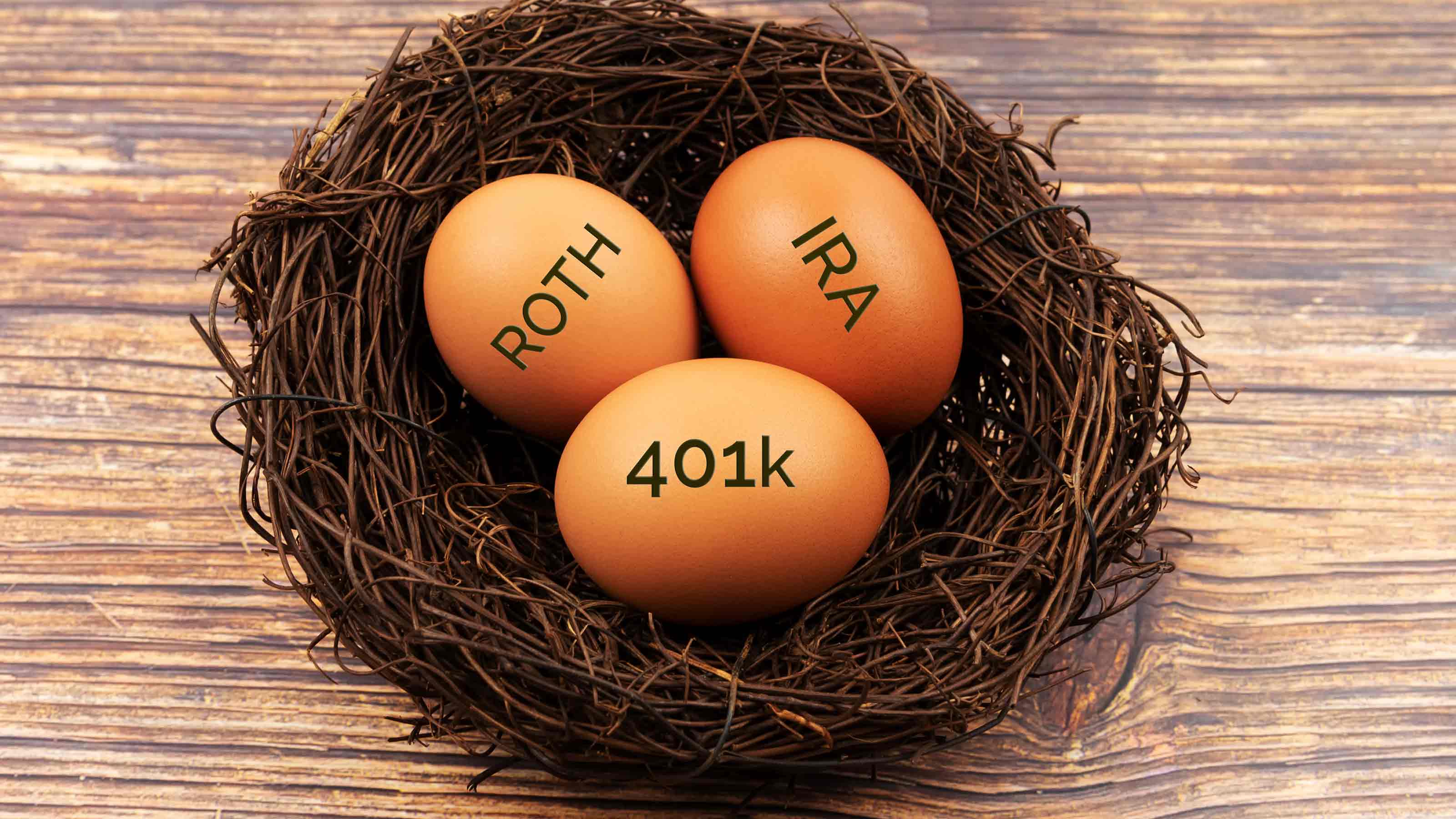Retirement Saver's Tax Credit Converted to "Saver's Match"
President Biden has signed legislation that turns the Saver's Credit into a government match to your retirement plan contributions.


The Saver's Credit helps lower- and middle-income Americans who contribute to a retirement plan by cutting up to $1,000 ($2,000 for married couples) off their tax bill when they file their annual tax return. It's also a particularly good incentive to get young people started early on saving for their golden years. But the Saver's Credit as it exists today is in for some significant changes – particularly with respect to how it's paid. The SECURE 2.0 Act of 2022, which was signed into law by President Biden on December 29, converts the credit into a government matching program for retirement plan contributions dubbed the "Saver's Match."
The new Saver's Match isn't effective until 2027, so the existing tax credit will still be around for a few more years. But if you'll still be saving for retirement after 2026, the smart move is to become familiar with the new tax break now so you can hit the ground running in 2027.
[Get a free issue of The Kiplinger Tax Letter, with timely tax advice and guidance to help protect your hard-earned wealth as the tax laws change. No information is required from you to get your free copy.]

Sign up for Kiplinger’s Free E-Newsletters
Profit and prosper with the best of expert advice on investing, taxes, retirement, personal finance and more - straight to your e-mail.
Profit and prosper with the best of expert advice - straight to your e-mail.
The Current Saver's Tax Credit
Currently, qualified taxpayers who contribute to a retirement plan (e.g., a 401(k), traditional IRA or Roth IRA) can claim the Saver's Tax Credit on their tax return. For 2022, single filers and married couples filing a separate return with adjusted gross income (AGI) of $34,000 or less are eligible for the credit ($36,500 for 2023). Married people filing a joint tax return must have an AGI of $68,000 or less ($73,000 for 2023), while head-of-household filers must have an AGI of $51,000 or less to qualify ($54,750 for 2023). However, even if your income is below the applicable limit, you won't qualify for the credit if you're under 18 years of age, a full-time student, or can be claimed as a dependent on someone else's tax return.
If you satisfy the eligibility requirements, the credit amount is either 10%, 20% or 50% of the first $2,000 ($4,000 for joint filers) you contribute to retirement accounts. The percentage used is based on your income and filing status. The credit is a "nonrefundable" credit, which means it can't be larger than your overall tax liability before the credit is applied (so your credit could be reduced if your tax bill is low).
Contributions to an ABLE account also qualify for the Saver's Credit if they're from the designated beneficiary (although this rule is set to expire after 2026).
For more information on the current credit, see Saver's Credit: A Retirement Tax Break for the Middle Class.
Saver's Match vs. Saver's Credit
The SECURE 2.0 Act makes a number of important revisions to the Saver's Credit starting in 2027. First and foremost, it changes the way you get the credit. Instead of having the credit applied against your tax liability when you file your tax return, the federal government will deposit a "matching contribution" directly into your retirement account. You'll get to pick which eligible retirement account it goes into, but it can't go into a Roth account. In addition, if you so elect or your matching contribution is less than $100, the match will be applied against your tax liability (as it is for the current tax credit) instead of deposited into a retirement account. Plus, the amount deposited into your account won't count towards your annual contribution limit. The hope is that this change will make it easier to save for retirement by actually putting more money into retirement accounts automatically.
The matching contribution will equal 50% of the first $2,000 contributed to eligible retirement accounts. Unlike the current Saver's Credit, the percentage won't change because of your income or filing status. The match (or credit if the match is applied against your tax liability) will also be "refundable" after 2026. As a result, you won't lose part of the matching funds if your tax liability is less than the amount of the match allowed.
Starting in 2027, the phase-out ranges are adjusted and expanded, too. This will allow more people to claim the Saver's Match. For single filers and married people filing separate returns, the match will be gradually reduced to zero if modified AGI is from $20,500 to $35,500. Joint filers will have their match reduced if their modified AGI is between $41,000 and $71,000, and head-of-household filers will see a reduction if their modified AGI is $30,750 to $53,250. These figures will be adjusted annually for inflation starting in 2028 (as the phase-out ranges for the current credit are adjusted each year). Deductions and exclusions allowed for any retirement savings contribution during the year won't be included in modified AGI (this is a new provision).
Eligibility for the Saver's Match would also be affected. Under the SECURE 2.0 Act, nonresident aliens don't qualify unless they are treated as a U.S. resident for the tax year. Generally, a "nonresident alien" is not a U.S. citizen, doesn't have a green card, and is not physically present in the U.S. for the required amount of time. As with the current Saver's Credit, taxpayers under 18 years of age, full-time students, and anyone claimed as a dependent on someone else's tax return aren't eligible, either.
Match contributions made under the SECURE 2.0 Act won't be subject to reduction or offset to pay child support, federal taxes, state income taxes, debts owed to federal agencies, or unemployment compensation debts.
If the IRS deposits money into your retirement account by mistake, the erroneous payment will be treated as an underpayment of tax that you must repay. However, if you take the money out of the account in a timely manner, you won't be hit with the 10% penalty for early withdraws from a retirement account (i.e., for taking money out before you're 59½ years old).
Penalties may be imposed if you withdraw a matching contribution from your retirement account before you turn 59½ years of age. However, the penalty can be avoided if you deposit the withdrawn funds back into an eligible retirement account.
Promotion of the Saver's Match
The SECURE 2.0 Act also requires the U.S. Department of the Treasury to increase public awareness of the matching contribution program. Among other things, this will include:
- Developing and distributing digital and print materials about the Saver's Match, including materials for state facilitated retirement savings programs;
- Translating these materials into the 10 most commonly spoken languages in the U.S.; and
- Making people aware of the potential penalties for withdrawing matching contributions early.
The Treasury must also submit a report to Congress by July 1, 2026, summarizing its planned promotional efforts.
More on the SECURE 2.0 Act
The SECURE 2.0 Act of 2022, which includes several provisions concerning retirement savings, is part of a larger government spending bill signed by President Biden on December 29, 2022.
Related
Get Kiplinger Today newsletter — free
Profit and prosper with the best of Kiplinger's advice on investing, taxes, retirement, personal finance and much more. Delivered daily. Enter your email in the box and click Sign Me Up.
Rocky Mengle was a Senior Tax Editor for Kiplinger from October 2018 to January 2023 with more than 20 years of experience covering federal and state tax developments. Before coming to Kiplinger, Rocky worked for Wolters Kluwer Tax & Accounting, and Kleinrock Publishing, where he provided breaking news and guidance for CPAs, tax attorneys, and other tax professionals. He has also been quoted as an expert by USA Today, Forbes, U.S. News & World Report, Reuters, Accounting Today, and other media outlets. Rocky holds a law degree from the University of Connecticut and a B.A. in History from Salisbury University.
-
 How to Get Apple TV Plus for just $2.99
How to Get Apple TV Plus for just $2.99For a limited time, you can get three months of Apple TV Plus for just $2.99 per month. Here’s how to get the deal.
By Rachael Green Published
-
 Stock Market Today: Stocks Surge to Close a Volatile Week
Stock Market Today: Stocks Surge to Close a Volatile WeekIt was another day with a week's worth of both news and price action, but it ended on a strongly positive note.
By David Dittman Published
-
 Ask the Editor: Taxes, April 11, 2025
Ask the Editor: Taxes, April 11, 2025Ask the Editor In our Ask the Editor series, Joy Taylor, The Kiplinger Tax Letter Editor, answers questions related to IRAs and other retirement accounts.
By Joy Taylor Published
-
 Free IRS Tax Filing for 30 Million People: Will It Continue Under Trump?
Free IRS Tax Filing for 30 Million People: Will It Continue Under Trump?Tax Filing Direct File was piloted last year in 12 states and has since expanded to 25. But some wonder whether the program will last under the Trump administration.
By Gabriella Cruz-Martínez Last updated
-
 Ask the Editor: Taxes, April 4, 2025
Ask the Editor: Taxes, April 4, 2025Ask the Editor In our new Ask the Editor series, The Kiplinger Tax Letter Editor answers questions related to the tax bill that Congress and the Trump admin are working on.
By Joy Taylor Published
-
 Did Florida’s Chance at $1,000 in Property Tax Rebates Vanish?
Did Florida’s Chance at $1,000 in Property Tax Rebates Vanish?State Taxes The Florida Legislature bypassed Gov. Ron DeSantis’ wish to cut property taxes and instead voted to lower the state’s sales tax.
By Gabriella Cruz-Martínez Published
-
 How Caregivers for Adults Can Save on Taxes in 2025
How Caregivers for Adults Can Save on Taxes in 2025Tax Breaks Caring for your parent or spouse can be stressful, but the IRS offers tax breaks for qualifying taxpayers. Here they are.
By Kate Schubel Published
-
 New South Carolina Income Tax Cut Might Eat Your Cash
New South Carolina Income Tax Cut Might Eat Your CashState Taxes South Carolina’s flat income tax bill could have the majority of residents paying higher income taxes. Find out how.
By Kate Schubel Published
-
 U.S. Treasury to Eliminate Paper Checks: What It Means for Tax Refunds, Social Security
U.S. Treasury to Eliminate Paper Checks: What It Means for Tax Refunds, Social SecurityTreasury President Trump signed an executive order forcing the federal government to phase out paper check disbursements by the fall.
By Gabriella Cruz-Martínez Published
-
 Ask the Editor: Taxes, March 28, 2025
Ask the Editor: Taxes, March 28, 2025Ask the Editor In our new Ask the Editor series, Joy Taylor, The Kiplinger Tax Letter Editor, answers questions related to filing of tax returns and paying taxes.
By Joy Taylor Published